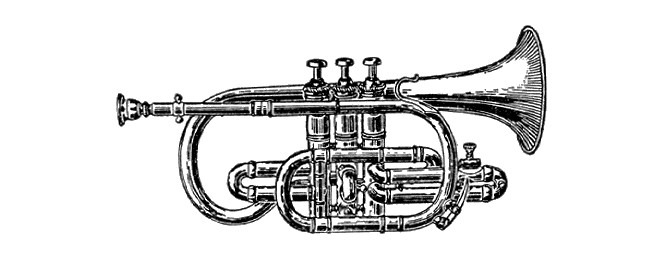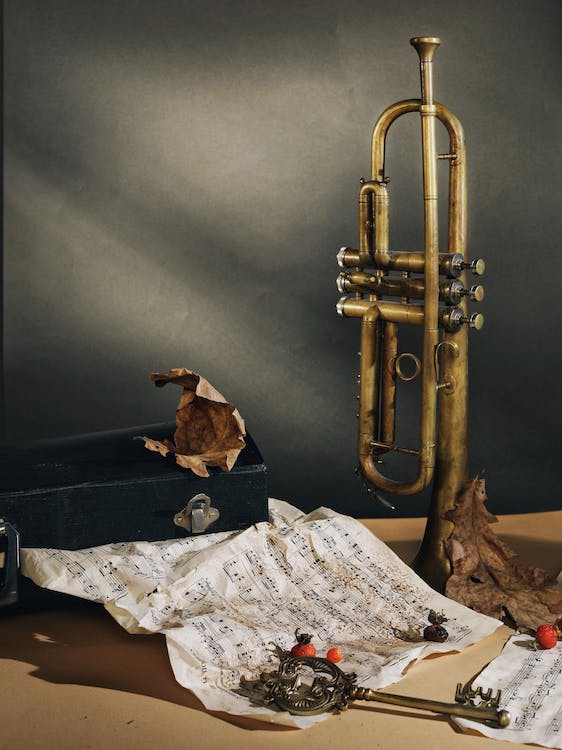The cornet is the smallest brass instrument that is a close relative of the trumpet. It is an instrument derived from the post horn, a valveless cylindrical instrument that has a cupped mouth. By the 1830s, Parisians instrument makers have started using a piston valve. Subsequently, cornets appeared in the 19th century as an instrumental part in French compositions. Still, these instruments were developed until Friedrich Blühmel and Heinrich Stölzel patented it.This instrument that is mostly used in brass bands has a conical bore that tapers from the lead pipe to the bell. Most of the time, all cornets have three piston type valves and are equipped with either rings or levers on the third or first valve. These rings are used to compensate for the problem in intonation that is innate in any brass instrument.
Aside from its resemblance to the trumpet, the cornet also shares the same pitch range as that of the trumpet. Also, this cornet occupies about a third of the players in a brass band. In fact, it is also the numerous instruments in the band. A full brass band includes the soprano cornet. The soprano cornet is the smaller version of the cornet and has a pitch range of Eb.
The soprano cornet is brighter in sound compare to the regular cornet and is highly distinguishable above the full band. As a replacement for soprano cornet, some player uses piccolo trumpets instead. However, this type of cornet variant is challenging to play. Also, there is usually one soprano cornet player in a band. With that, the soprano cornet performer is considered specialists. Furthermore, although the soprano cornet poses the same qualities as the B-flat cornet and is typically played by a skilled musician, the soprano cornet is rarely played as a solo instrument.
In a brass band, the cornet is the primary soprano voice and the principal melody in a small group. However, in small groups, like in the sextet, the cornet usually plays two parts, with the second part providing the alto voice. Meanwhile, in an orchestra, the cornet occupies the same position, similar to that of the violin.

Meanwhile, the player’s right hand is used to manipulate the valves. The left hand is then used to support the instrument. Additionally, if the instrument has a compensation mechanism, it is then operated using the left hand.
When it comes to the tone color, the cornet is between the dark, complex tone of the fluegelhorn and the bright tone color of the trumpet. However, the cornet’s relatively short air column gives it responsiveness, as well as agility. Sometimes, brass rangers modify the sound quality of this instrument. This is done by specifying several kinds of mutes. The cup mute and the straight mute are the most common among these. Along with that, a subtle change in timbre is achieved through writing in low or high registers, variations of keys, the presence or absence of vibrato, and the use of dynamics.
Some of the notable cornet players were James Shepherd, who then became the bridge between several great players of the post-war and the modern superstars of the current era. Shepherd began as a learner who had rapidly progress as a cornet musician. Aside from Shepherd, other famous cornet players have also emerged. These include Harry Mortimer, Maurice Murphy, Herbert Clarke, Jean Baptiste Arban, Ken Smith, Willie Lang,Bix Beiderbecke, Phillip McCann, and Wynton Marsalis. These musicians have contributed their skills to the art performance and have shown brilliance in the orchestra.

